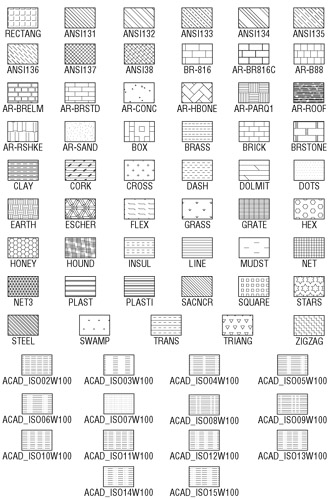


Now we need to make it the current layer so see the little sheet of paper next to the word Hatch on the left of it there? Just double-click on it, that sets it as the current layer you can see Current Layer Hatch at the top of the dialog, click there on the cross to close the Layer Properties manager. I'm gonna click on Okay and Continuous is a perfectly good line type for that layer. I'm gonna go for that one there which is Color 31. There's the new layer icon there, just click and it comes up as Layer 1, so I'm just gonna type in Hatch, like so, and I'm going to give it an orangey kind of color so I'm gonna click on where it says White and I'm gonna give it an orangey kind of color. So on the Home tab you go to the Layers panel, click on Layer Properties, and what we're going to do, we're just going to set up a new layer called Hatch. Always, always, always create a new layer for your Hatching. Now I'm just gonna hit Escape there and I'm just gonna give you a little tip. We've got Hatch, Gradient, and we've obviously covered Boundaries already. It's just over here and it's this little fly-out here. Now the Hatch command is on the Draw panel on the Home tab on the ribbon. Now what we're going to look at is just different methods of Hatching and how Hatching actually works within AutoCAD itself. So we've got three offices we've got this one, we've got this one, and we've got this one. Now I'm just gonna pan above the command line a little bit, just for clarity so that when those words pop up off of the command line there, they don't affect the view. And that will zoom us into the office area. Click on the top there and then we're gonna select Custom Model views and you'll see there's an Office Model view there, saved in the drawing for you. So let's go over to the View Control as we've done in previous videos. Now we're going to look at a Hatch and we're going to look at what is called a Solid Fill and we're going to look at different methods of Hatching as well. And what I've done is I've saved some Model views for you and we've got an Office Model view that we need to go to and then we're going to Hatch the rooms in the office, ready to be highlighted to be used at a later date. It is familiar, it's that building with the doors, the stairs, the windows, and so on. Now the drawing itself you will recognize. In a construction drawing like the one you can see here, you might use hatches to highlight rooms that need working on or perhaps are going to be refurbished or rebuilt, something along those lines. Now Hatching and Gradients are normally used on a drawing to highlight specific areas of a drawing, so for example you might cut through a piece of metal and use a crosshatch on the sectional cutout view that you've created. We're now in a new section in our AutoCAD 2017 Essentials course, and what we're going to look at now is Hatching and Gradients.


 0 kommentar(er)
0 kommentar(er)
